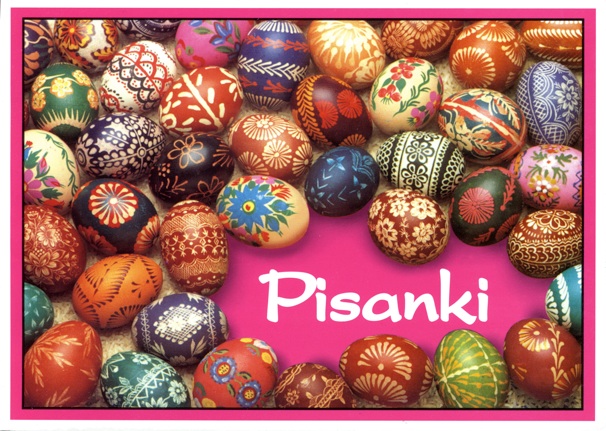
Pisanki
Author: Anna Bartosz
Edition: 1st
Format: Small softcover
Pages: 86
Language: Polish (with English introduction)
Illustrations: 54 color photos
Publisher: Muzeum Okręgowe w Tarnowie (Poland, 1996)
Availability: Yes
Acquired: Polish Art Center
ISBN: 83-85988-01-7
This is a small, delightful little book that has photos of pisanki from the Regional Museum in Tarnowie. The town is located in Małopolskie (Lesser Poland) voivodeship, between Krakow and Rzeszow, in teh southeast of the country.
There is a fairly long introduction in Polish, and a somewhat shorter one in English, which traces the history of egg decoration in Poland, discusses spring egg rituals, and describes some of the techniques used to create decorated Easter Eggs. I discovered that some actual pisanki had been discovered in archeological sites dating to the 10th century; I also learned that, although Christianity became a state religion in 966, eating “Easter” eggs (or, rather, eggs at Easter) was not allowed by the church (it had been a pagan practice) until the 13th century, and even then, only if special prayers were said. I also found out that the “painting” of pisanki is most common in the southern and eastern parts of Poland.
There are numerous plates that show examples, either individual or grouped, of several different types of pisanki. The most numerous appear to by the technika batikowa (wax resist), which are created either with a stylus or a pinhead (drop-pull). The ones in this photo are of the drop-pull sort, but extremely well done, and incorporating a second technique (wytrawiania).
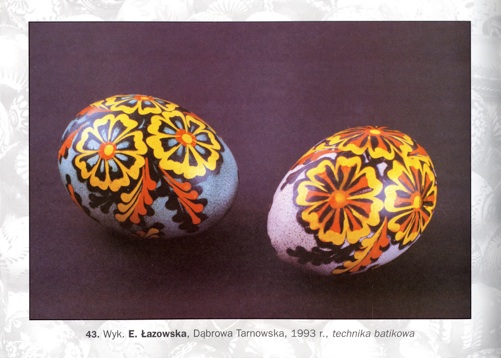
Also very common is the simple painted egg, the so-called pisanka malowana. Many examples are given, ranging from quite simple ones, to very intricately painted ones. I particularly liked the one below, as it had a traditional, primitive feel. Many others (see cover above) resemble pottery and wall painting patterns, often with brightly colored flowers.
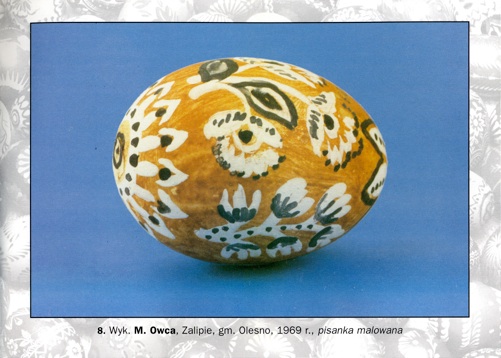
Scratched eggs, made by technika skrobania, are now common in the region, but their popularity, according to the book, only dates to the mid 20th century. The scratched eggs are quite pretty, and there are a good number of them in this book.
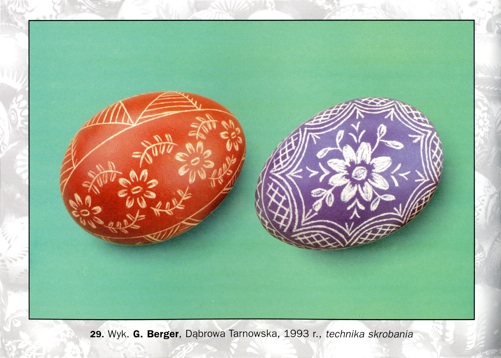
A fourth technique is one that, according to this book, is not only rare but a speciality of the region. It is called wytrawiania, and is done by creating a pisanka batikowana on a dyed egg, and then removing the final color (to varying degrees) by soaking the egg in an acidic solution––sauerkraut, whey, borshcht or, lately, vinegar. The acid “washes out” the bright final dye color, and returns the egg to the original shell color.
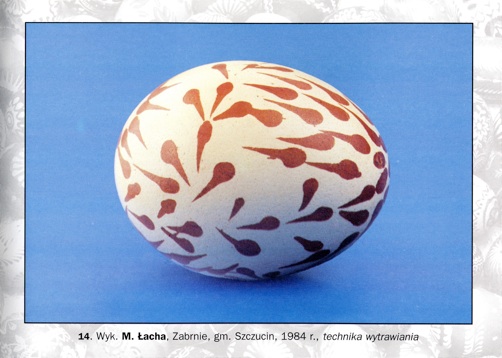
This is a cute little book, and a pleasant addition to any pysanka library.
Back to MAIN Slavic Books home page.
Back to MAIN Books home page.
Back to Pysanka Bibliography.
Search my site with Google
